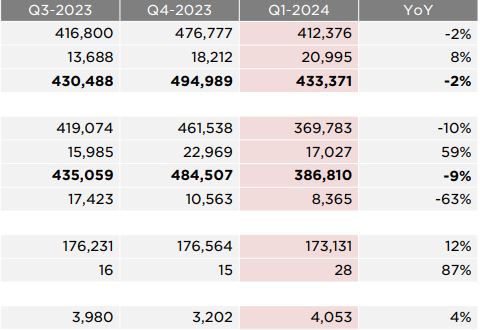Fundamental analysis is a key method used to evaluate the intrinsic value of stocks by examining related economic, financial, and other qualitative and quantitative factors. This analysis helps investors determine a company’s underlying value and potential for future growth. Here’s a beginner’s guide to the basics of fundamental analysis:
- Understanding Financial Statements: The core of fundamental analysis is the evaluation of a company’s financial health through its financial statements, which include the balance sheet, income statement, and cash flow statement.
- Balance Sheet: Shows the company’s assets, liabilities, and shareholders’ equity at a specific point in time.
- Income Statement: Provides a summary of the company’s revenues, expenses, and profits over a specific period, showing how the company earns its income and incurs its expenses.
- Cash Flow Statement: Details the flow of cash in and out of the business, helping investors understand the company’s liquidity.
- Key Financial Ratios: Analysts use several financial ratios to compare different aspects of a company’s financial performance:
- Price-to-Earnings Ratio (P/E): Indicates how much investors are willing to pay per dollar of earnings, helping gauge market expectations.
- Debt-to-Equity Ratio (D/E): Measures the degree to which a company is financing its operations through debt versus wholly owned funds.
- Return on Equity (ROE): Shows how effectively the company uses equity from shareholders to generate profit.
- Current Ratio: Assesses the company’s ability to pay off its short-term liabilities with its short-term assets.
- Economic Indicators: Fundamental analysts also consider wider economic factors such as GDP growth rates, employment rates, interest rates, and inflation, as these can significantly affect a company’s performance.
- Industry Analysis: Understanding the industry dynamics and the company’s position within the industry is crucial. This includes analyzing market size, growth rate, competitive landscape, and regulatory environment.
- Management and Corporate Governance: Evaluating a company’s leadership, management style, and corporate governance practices can provide insights into the company’s strategic direction and operational effectiveness.
- Qualitative Factors: These include brand loyalty, patents, proprietary technology, and other intangible assets that may affect the company’s competitive edge.
- Valuation Models: Fundamental analysts often use various valuation models to determine whether a stock is undervalued or overvalued. Common methods include the Discounted Cash Flow (DCF) analysis and the Dividend Discount Model (DDM).
The goal of fundamental analysis is to produce a value that an investor can compare with the stock’s current price to see if the stock is undervalued or overvalued. This approach is in contrast to technical analysis, which forecasts the direction of prices through the study of past market data, primarily price and volume
In the next articles we are going to cover basic reading and understanding of Financial Statements, Interpretation of Key Financial Ratio and Valuation Models, which cover the core technical skills required in the analysis. Less technical but still a critical aspect, is the assessment of Management and Corporate Governance.
